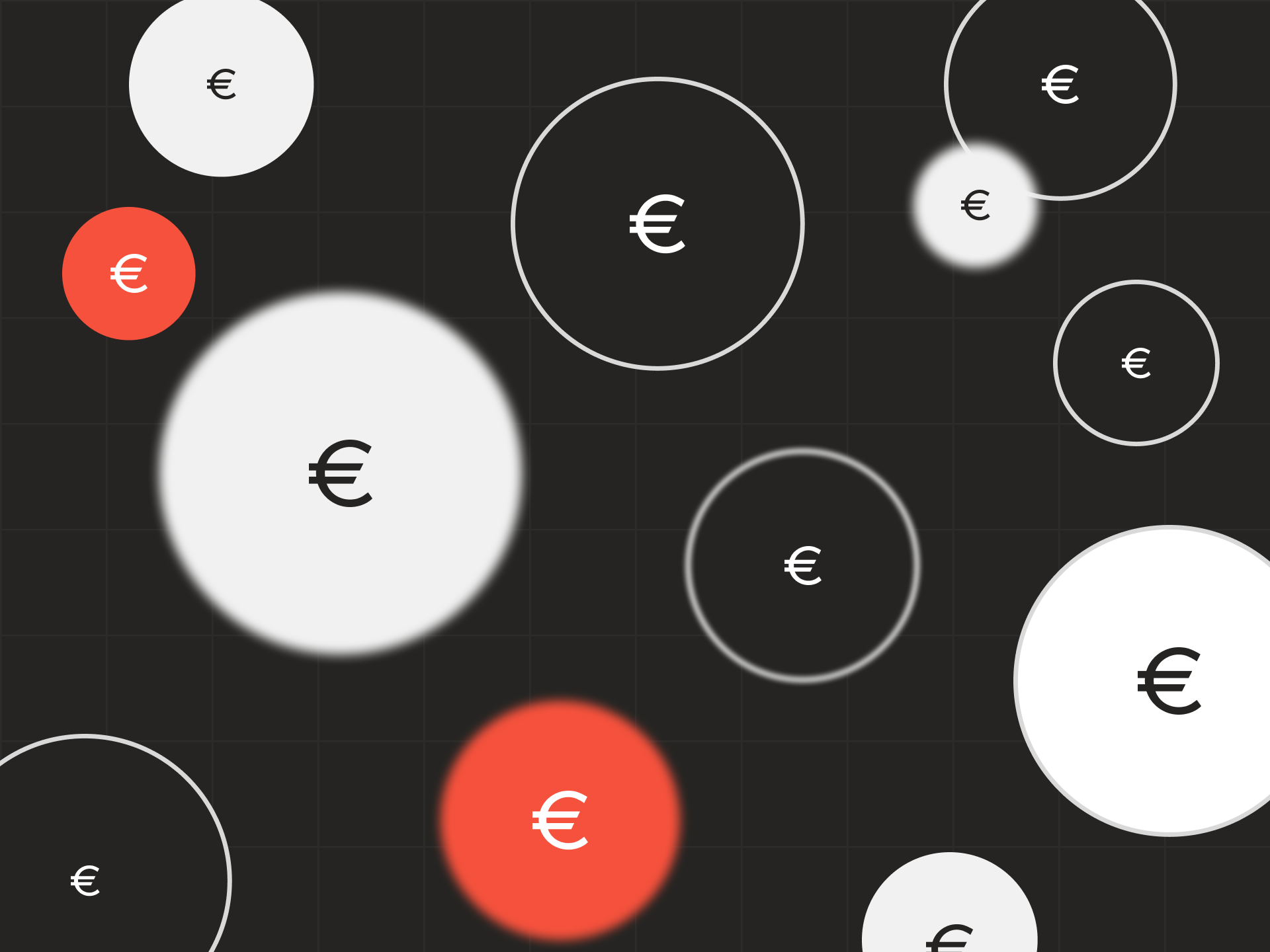Over the past few decades, there has been a notable upswing in cross-border payments, propelled by the globalization of trade, capital, migration, and initiatives such as the SEPA (Single Euro Payments Area).
Projections indicate that global payments are set to surge from $190 trillion in 2023 to $290 trillion by 2030.
By offering payment options familiar to consumers in different regions, merchants can adapt their global commerce strategy to local markets, enhance the customer experience, and capitalize on new revenue streams. This is particularly important to expand your market, such as across Europe.
However, cross-border payments can be quite challenging as they involve more risks, complexities, and rules than domestic payments.
Sure, the process may seem overwhelming, but with the right knowledge and tools, you can tackle any challenge that comes your way and make cross-border payments a breeze.
This article will explore each of these challenges in detail, discussing their implications for financial institutions and businesses. We will also examine the potential solutions to help businesses navigate the complexities of cross-border banking and stay ahead of the curve and current cross-border banking practices.
Top 4 challenges in cross-border payments.
Cross-border payments are an essential component of the global economy, facilitating trade and commerce between countries.
These transactions come with significant challenges that financial institutions and businesses must navigate to provide efficient and effective services to their customers.
1. High transaction costs.
Cross-border payments can come with a hefty price tag due to the numerous intermediaries involved in transferring money from one country to another. These intermediaries charge fees for their services, and regulatory costs and foreign exchange fees can also add up quickly.
Fees for international payments average around 1.5% for corporate transactions and can go as high as 6.3% for remittances.
A good example is credit cards. This payment method can be expensive for merchants since each card payment goes through multiple intermediaries, resulting in a higher cost for the entire transaction.
According to Fintech Futures, Mastercard will increase fees more than fivefold when a British shopper uses a debit or credit card to buy from an EU-based company.
These challenges can make it difficult for businesses, banks, and other financial institutions to provide competitive rates to customers, especially in a crowded market with increasing demand for cross-border payments.
Additionally, credit cards can be prone to errors such as declined payments due to server issues, manual data entry mistakes, and even fraud.
These issues can lead to increased administrative costs for businesses, such as following up with customers to retrieve the payment or handling an influx of customer complaints about declined transactions.
2. Slow transactions.
Unlike transactions within the EU, Cross-border payments can be challenging due to the lengthy processing time, typically taking between 2 – 5 days to complete via traditional bank transfer.
This delay is caused by the involvement of multiple entities in a single transaction, resulting in an unsatisfactory turnaround time for businesses and consumers who demand fast and convenient services.
Another factor is the unlawful act of “IBAN discrimination,” which obstructs a payer from utilizing a payment account issued in a different SEPA country based on the country code at the start of the IBAN.
Delays pose challenges for end users attempting to seamlessly send and receive money, impeding cross-border trade, investment, and remittances.
In today’s world, where speed and convenience are paramount, customers are unwilling to settle for slow and delayed cross-border payment systems. Organizations must choose between expensive and slow traditional bank transfers or opt for newer payment service providers that offer a cheaper and instant alternative.
Although international transactions are inherently complex, it is crucial for businesses to prioritize reducing processing time to meet their customers’ expectations.
3. Lack of transparency.
Digital payments have revolutionized cross-border payments, making them faster, more accessible, and more convenient than ever before. However, along with these benefits come significant challenges, including the risk of financial crimes such as money laundering and terrorist financing.
One of the major challenges in preventing money laundering in cross-border payments is the lack of transparency in transactions.
Sometimes, it can be challenging to identify the parties involved in a transaction or the source of the funds. This makes it difficult to detect suspicious activity and prevent money laundering.
Money laundering is a serious concern for financial institutions and governments worldwide, and it is important to address the challenges associated with preventing it in cross-border payments.
The complexity of cross-border payments is one of the biggest challenges in monitoring and detecting illicit activities. Criminals can exploit this complexity to move money across borders and evade detection.
Additionally, different countries have different regulations and laws regarding AML (anti-money laundering) compliance. This creates challenges for financial institutions operating across borders, as they must comply with multiple regulations.
4. Regulatory requirements.
As the world becomes increasingly interconnected, so do our financial systems. With cross-border banking on the rise, understanding the challenges and risks is more important than ever.
One major challenge is the potential for problems in one country’s banking system to spill over into other countries where the bank is active. This interdependence can have serious implications for financial stability.
National authorities also play a crucial role in cross-border banking, but their decisions and actions can have far-reaching consequences for foreign economies. This is particularly true when foreign operations are run through branches subject to foreign supervision.
The legal distinction between branches and subsidiaries is also becoming blurred, complicating supervision and crisis management.
The practicalities of supervision and crisis management are further complicated by the multiplication of relevant authorities, increasing the regulatory burden on financial firms.
Conflicting national interests can also arise as banks become truly cross-border, with different priorities and regulatory structures between countries.
The typical illustration of this problem is a bank that is of limited size in the home country but has a systemically important branch network abroad. While a potential bank failure would not substantially disturb the home-country economy, the consequences for the host country could be destructive.
The host country is likely to end up with the bulk of the bill for resolving any failure, so the willingness to conduct close supervision of the bank is substantial in the host country. However, the same cannot be said for the home country.
One such national authority, the Eurosystem, has revised its retail payments strategy, focusing on fortifying the European payments market by establishing a pan-European solution for retail payments at the point of interaction and enhancing the SEPA (Single Euro Payments Area).
PSD2, the updated Payment Services Directive, has laid the groundwork for unlocking the banking system and fostering the growth of creative payment services offered by fintech companies.
Before we explore these opportunities, let’s answer the question- what is SEPA payments?
Single euro payments area.
The Single Euro Payments Area or SEPA is a transaction system established by the Eurosystem of the EU in pursuit of establishing a genuine single currency market.
SEPA is a system that is used by banks located within member countries and aims to standardize cashless payments among euro countries similarly to domestic payments. You will need a bank account within the SEPA system to obtain the required IBAN.
SEPA was initially introduced for credit transfers in 2008, followed by direct debits in 2009, achieving full implementation by 2014 in the euro area and by 2016 in non-euro area SEPA countries.
Comprising 36 European countries, the SEPA region includes nations beyond the euro area or the European Union.
Payment transactions within this network are restricted to Europe, and customers, whether sending or receiving, depend on their banks for real-time payment settlements, which may exceed anticipated timeframes.
Customers in non-Euro currency states may face higher costs for cross-border transactions than their counterparts in euro-currency states due to SEPA conversion, making it a potentially expensive process for customers from non-Euro member states.
Despite these challenges, cross-border banking remains a vital tool for global commerce. With the proper knowledge and tools, businesses can adapt their strategies to local markets and capitalize on new revenue streams.
By staying informed and using the right solution to stay ahead of the curve, we can navigate the challenges of global interdependence and continue to drive progress forward.
The fintech solution to cross-border payment challenges.
Digital payments have revolutionized cross-border payments, making them faster, more accessible, and more convenient than ever. However, these benefits come with significant challenges, including the risk of financial crimes such as money laundering and terrorist financing.
Merchants benefit from fast and secure transactions with verified parties, allowing for ease of doing business and increasing their bottom line. Account-to-account (A2A) payments offer an efficient solution that eliminates multiple intermediaries, leading to significant cost savings for merchants.
According to Fintech Futures, A2A payments can be up to 90% cheaper than other payment methods. A2A transactions also offer the benefit of real-time processing, allowing for instant payments and eliminating the risk of credit loss and fraud.
Open Banking payment solutions, such as Zimpler A2A, can be seamlessly embedded in existing apps, focusing more on conversion and user experience.
Zimpler A2A payment solutions offer AML security checks embedded in the payment flow, providing a frictionless transaction experience for customers in a secure banking environment.
The automated monitoring of databases ensures compliance with relevant regulations to prevent money laundering.
Final thought.
Digital payments have revolutionized the way we conduct cross-border transactions, providing faster, more accessible, and convenient options. It is, however, not without its challenges.
A2A payment solutions, like the Zimpler Payouts solution, offer fast, secure, and cost-effective transactions, with the added benefit of real-time processing and automated reconciliation. By adopting A2A payment solutions, businesses can improve their conversion rates, provide a better customer experience, and increase their bottom line.
If you are interested in direct and instant transactions that give you what you need when you need it, then contact us to explore how we can help your business grow, one payment at a time.
Why make it hard when you can make it Zimpler?
Join the payment revolution.
—
The information contained in this post is intended for informational purposes only, and should not be relied upon for professional advice of any kind. Zimpler does not make any representation or warranty as to the completeness or accuracy of the information, and assumes no liability or responsibility that may result from reliance on such information.



